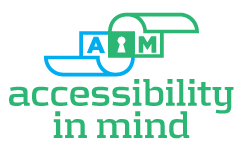Department of Homeland Security Sued for Section 508 Violations
On April 26, 2013, Michael Leiterman, a lawyer for the Department of Homeland Security (DHS) filed a suit against his employer, "for violating federal anti-discrimination laws that require the federal government to provide equal opportunity to people with disabilities", citing Section 508 of the Americans with Disabilities Act (ADA)
Section 508 is an amendment to the Rehabilitation Act, passed by Congress in 1998. This amendment specifies that government agencies must make all electronic and information technology available to people with disabilities. Since its adoption in 1998, the digital realm has exploded, making Section 508 compliance even more necessary to ensure accessibility for people with disabilities.
The lawsuit alleges that DHS is in violation of the Act “by purchasing, developing, and implementing inaccessible technology, using inaccessible training and testing platforms and materials, requiring Mr. Leiterman to provide accessibility testing, troubleshooting, and correction for CBP’s technology, failing to provide reasonable accommodations for his disability, and denying him a promotion because of his disability and the agency’s inaccessible technology.”
Mr. Leiterman, who is blind, has worked at Customs and Border Protection (“CBP”), a division of the United States Department of Homeland Security (“DHS”), since August 2006. The lawsuit alleges multiple instances of violations, including inaccessible documents, intranets, and online training modules.
The brief...
Document Creators: Are you responsible for Section 508 compliance?
Let us be among the first to remind you to check the fine print in the specifications for the document you are creating right now. Is their any federal money involved? That's just one reason to make sure your document is accessible and compliant with Section 508.
These regulations have been in place since 1973, but are just beginning to be monitored and enforced; several lawsuits were required before production contracts started routinely specifying compliance with Section 508
Here's the official word:
These regulations have been in place since 1973, but are just beginning to be monitored and enforced; several lawsuits were required before production contracts started routinely specifying compliance with Section 508
Here's the official word:
Section 508 of the Rehabilitation Act of 1973 (29 U.S.C. § 794d) requires the federal government to ensure that the electronic and information technology that it develops, procures, maintains, or uses is accessible to persons with disabilities. Section 508 also directs the Attorney General to submit reports to the President and Congress on the state of federal agencies' compliance with the Act's requirements. In preparation for its report, the Department of Justice conducts a survey of federal agencies to obtain information on the state of compliance with Section 508, including the Section 508 Electronic and Information Technology Accessibility Standards
.
Each federal department or agency is required by Section 508 to provide the Department of Justice with information that is needed to prepare the reports. Following below is information about the Department of Justice’s Section 508 surveys and reports.
Plan now and avoid the rush this fall- learn more about Section 508 document preparation and remediation at Electronic Document Compliance Services website.
Work Directly With a 508 Document Specialist
Electronic Document Compliance Services clients work directly with our Section 508 document remediators, streamlining the process and reducing “middle-man” costs.
In addition to remediation of documents for section 508 compliance, EDCS can review your documents and provide certification of 508 compliancy, guaranteeing accessibility and usabilty.
Passing automatic PDF and 508 checks is just the first step in our complete certification service; our federally-certified staff will test your documents with both automatic and manual procedures to assure they meet or exceed all 16 requirements of Section 508, and provide you with a certificate and an affadavit affirming compliance.
If you want answers to your compliance questions and quick turnaround, call now and talk to a specialist: 919-410-7408
The "Curb Cut" shows how accessibility helps the entire population
Many people think that accessibility regulation just benefit those with disabilities (an estimated 24 million Americans!) but the value is much more broadly felt.
Accessibility offers advantages that go beyond ensuring usability for persons with disabilities. Many technologies first designed to assist persons with disabilities were later adopted because of their value to everyone. Consider the advantage curb cuts provide. Although first created for people in wheelchairs, they make access for cyclists and parents with strollers easier. Universal accessibility can help ensure that
everyone has access to the tools and information they need to learn and communicate.
Electronic documents are often evaluated for its usability and accessibility in order to be compliant with Section 508. Though the terms are often used interchangeably, there is a difference. Even if the document is "accessible", there may still be serious usability problems that make it equally difficult for any person, disabled or non-disabled, to use it.
Usability focuses on how intuitive and easy it is for all people to use. Usable designs are consistent and simple to learn to use. Usability and accessibility often go hand-in-hand.
Accessibility is determined by how barrier free the technology is. Accessibility problems are those that make it more difficult for persons with disabilities to use an application or service than for a non-disabled person.
The key to accessibility is that it should be easy for everyone to use, including persons with disabilities.
Subscribe to:
Posts (Atom)
The Truth About the Refresh: WCAG 2.0 It I!
In January 2017, the U.S. Access Board issued the Information and Communication Technology (ICT) Standards and Guidelines, updating its ex...

-
Here's a nice overview showing some real-world examples of what it takes to make documents accessible and compliant with Section 508: ...
-
Section 508 Watchers out there, here's a good one: Just got the print edition of "Medicare & You" in the mail, thought I...
-
It is a common myth that making your documents accessible and compliant with Section 508 is only for the benefit of users with disabilitie...

